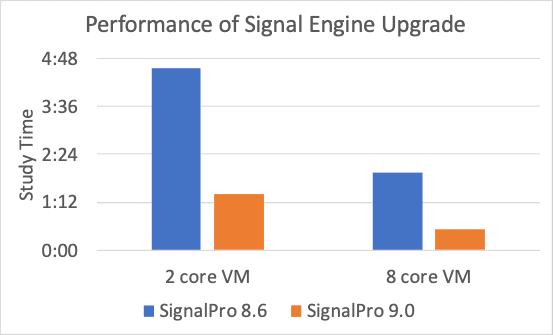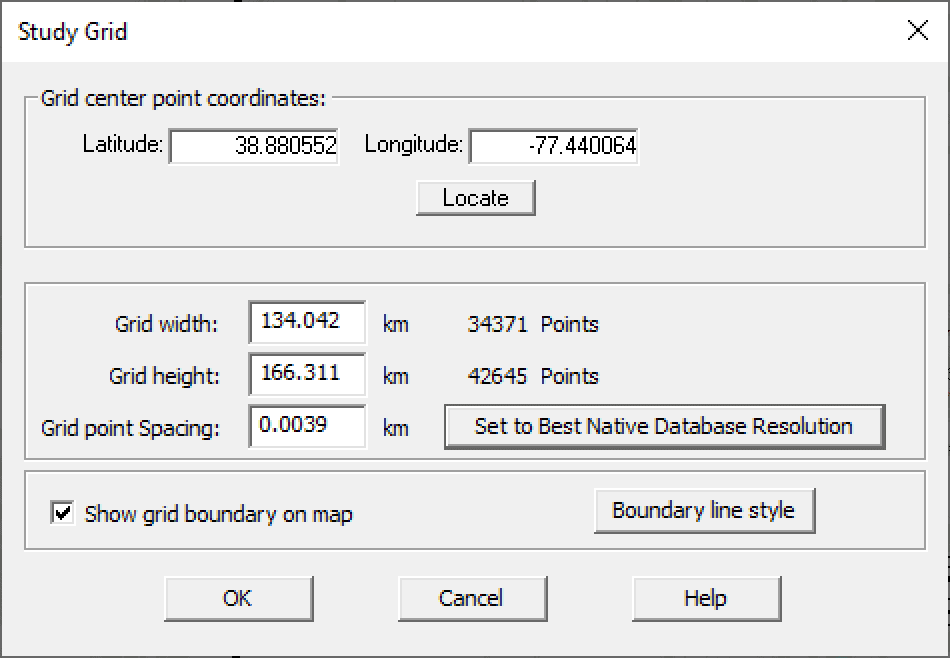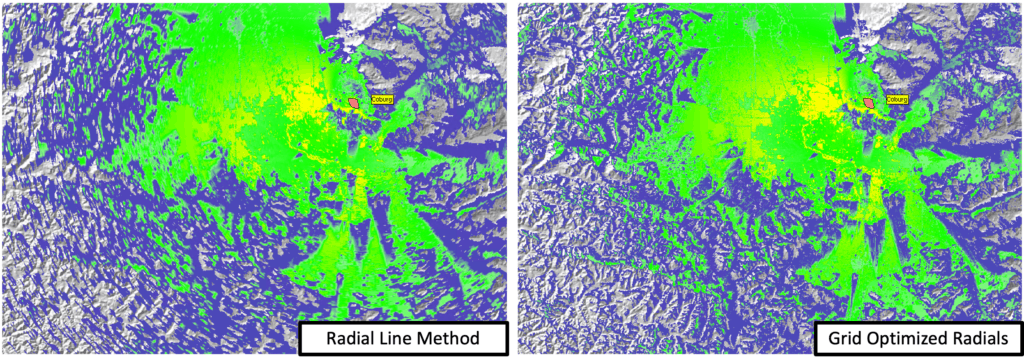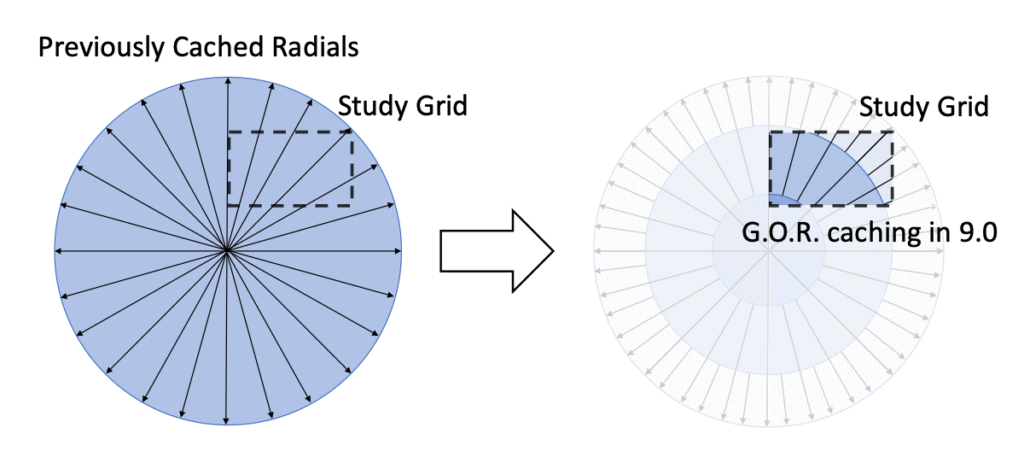August 6, 2019
EDX SignalPro 9.0.0/Signal 12.0.0
NEW FEATURES / ENHANCEMENTS / UPDATES
Productivity Enhancements

- Signal study engine upgrade – The Signal study engine has received a major upgrade that better leverages the processing power of multi-core CPU architectures. This upgrade produces a better than 3x improvement in study speed for Area Studies, while improving performance for Multipoint Studies as well.
This change is supported for all:
– Basic Studies
– TSB-88 / MonteCarlo Studies
– FCC Contour Studies
– LTE Studies* - (LoRa and IoT studies were natively built on the upgraded study engine)
- Study Grids now support sizes in excess of 30k x 30k grid bins (SignalPro & Signal-IO) – SignalPro now enables the creation of single-run area studies for state or nationwide coverage maps. This eliminates the need to subdivide projects into separate coverage areas that need to be stitched together outside of SignalPro. Previously SignalPro study grids were limited to 5k x 5k grid bins.Support for this change also includes enhancements to:
– Map layer scalability for Terrain, Area Studies, Land Use / Clutter, Land Use Clutter Heights, Contours, and Terrain Min / Max
– Export scalability for KML, MIF, TAB, and SHP - Improved management of TSB-88 performance targets – The TSB-88 System Study Setup dialog now includes simplified configuration management for channel performance. Previous versions of SignalPro used inconsistent performance criteria between studies for TSB-88 system setup, increasing the complexity to make changes for comparative studies.
Accuracy Enhancements
- Native-Resolution Study Grids – Since the maximum accuracy of area studies is determined by the resolution of the underlying terrain and land cover databases used as inputs to the propagation models, the Study Grid dialog now includes an option to set the grid point spacing to the “Best Native Database Resolution”. This feature automatically calculates a rectilinear point spacing for the study grid based on the highest density terrain or land clutter database available.NOTE: When combined with SignalPro’s support for larger study grids and the Signal study engine upgrade, this feature provides the ability to run high-density studies of small cell networks at exceptional levels of precision.

- Grid Optimized Radials (SignalPro-Only) – SignalPro 9.0 adds support for a new area study calculation method, Grid Optimized Radials. By successively adding radials into the calculation as the study grid moves further away from the sector, this enhancement provides a substantial increase in prediction accuracy at long distances while minimizing the impact of increased computation time.(click to zoom in)


Additionally, the Grid Optimized Radials method implements intelligent caching of radial results to ensure that only the relevant portions of the study are included and cached for reuse.

- Increased precision of speed of light constant – The precision of the speed of light was increased as part of the Signal study engine upgrade. NOTE: This may result in a change to your study results for existing projects.
- Improved distribution of random number generator – The random number generator used for stochastic & Monte Carlo studies is now better aligned with a normal gaussian distribution. This change is part of the Signal study engine upgrade. NOTE: This may result in a change to your study results for existing projects.
Cirrus™ Licensing (an EDX-managed, cloud-based licensing option for SignalPro)
- Flexible Licensing Options – EDX now offers multiple no-commitment, subscription and surge licensing options for SignalPro. To add users on-demand, swap modules as needed, or run SignalPro within your corporate cloud, see edx.com or contact our Sales team at edx.com/contact/.
- Live session management – Cirrus™ Licensing continuously manages the pool of active licenses to ensure that shared licenses are available for use, but not left dangling or orphaned if a user shuts down their computer without closing the software.
- Offline session checkout – Shared licenses of SignalPro can now be checked-out using Cirrus™ Licensing for extended offline use or for scenarios with unreliable network connectivity.
BUG FIXES / OTHER
- All IDs get same name on editing unrelated spreadsheet column – In the spreadsheet editors, it was previously possible to accidentally overwrite all record IDs due to a bug in the “Fill” operation.
- Fixed slowdown when opening projects in SignalPro 8.6.8 – The 8.6.8 release of SignalPro experienced a slowdown when opening projects that referenced terrain databases on network file shares. This issue has been corrected.
- Corrected results for percent valid area in PDF report – The results for percent valid area were previously incorrect when the project was set to use english units instead of metric.
- “_USER_DOC_PATH” showing up as entries in the spreadsheet editor – This issue was due to a scenario in which the “My Documents” folder existed on an unavailable network shared drive. In such situations, the software now replaces the value with an empty string.
- Study name now automatically added to PDF title box in study query – The PDF title box previously contained a non-human readable description.
- The “Auto Grid” option on Study Grids has been deprecated – The “Auto Grid” option can no longer be used to set the configuration of the study grid
- The “Symbols” option for display of Area Studies, Terrain, & Land Use has been deprecated – Symbols can no longer be used as a display option for area studies
- TSB-88 radius-of-operation overlay reliability study no longer extends beyond the Study Grid boundary – This correction is associated with the Signal Study Engine upgrade. NOTE: This may result in a change to your study results for existing projects.
- Corrected interpolation errors for narrow beam antennas with significant downtilt – The application now properly interpolates the antenna gain between the horizontal and all available vertical pattern slices regardless of the antenna orientation. NOTE: This may result in a change to your study results for existing projects.
- Aligned the WGS84 flattening constant to be consistent with our primary GIS data provider – Maintaining alignment on this constant enables faster map rendering and study computations without a significant cost to accuracy (a < 3mm delta). NOTE: This may result in a change to your study results for existing projects.
KNOWN ISSUES
- Temporary Limitations to Signal Study Engine Upgrade – The following studies are not yet supported by the enhanced Signal study engine and therefore do not yet support study grids larger than 5k x 5k
– LTE Average Uplink CQI (Monte Carlo) Study
– All studies included in the WiMAX / Wireless Broadband module
– All studies included in the Mobile / Cellular module
– All studies included in the DAS module
– All PTC studies
